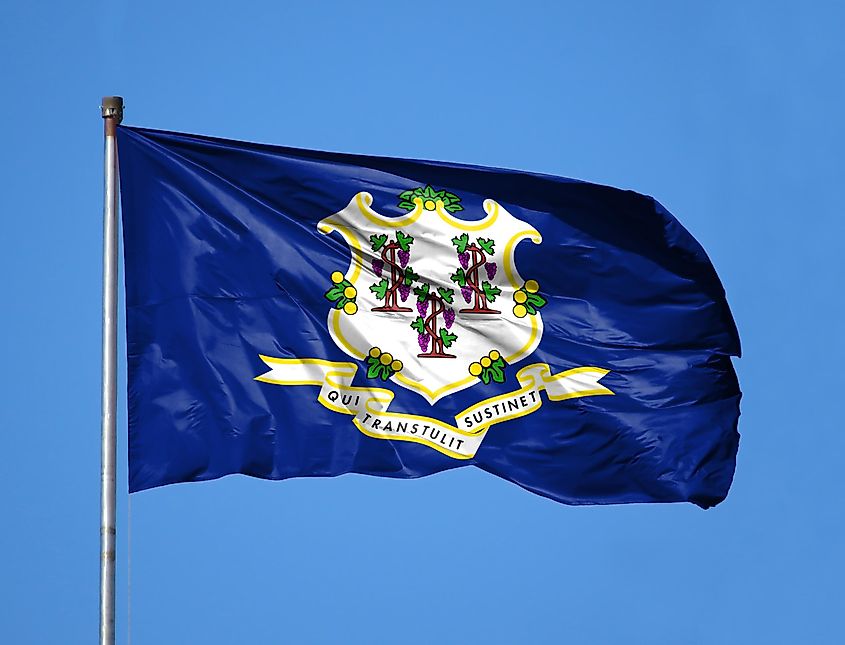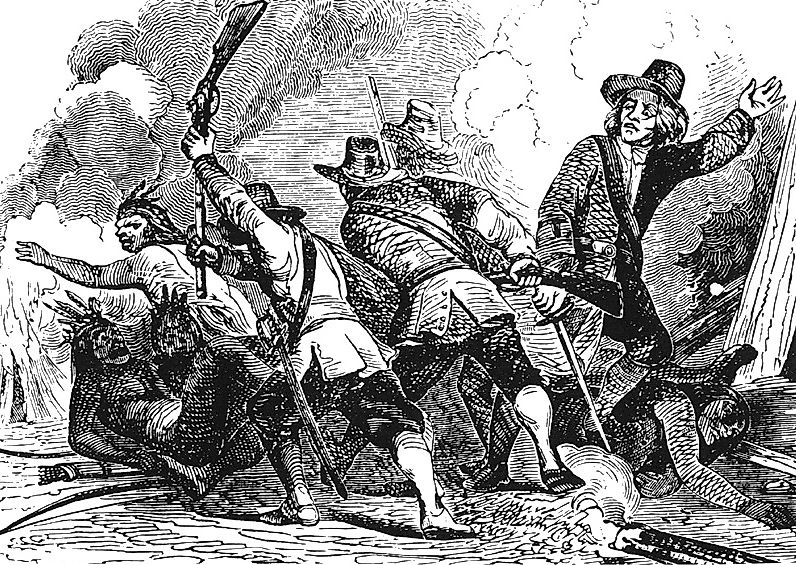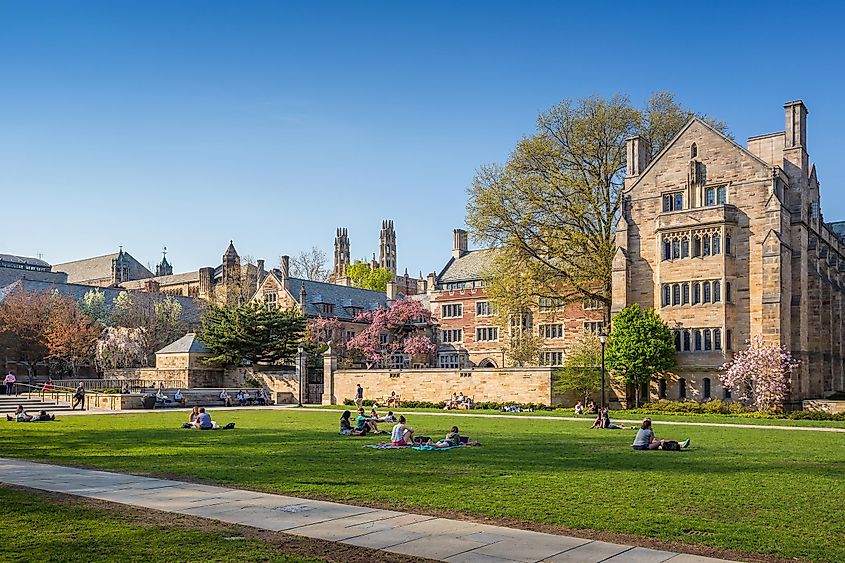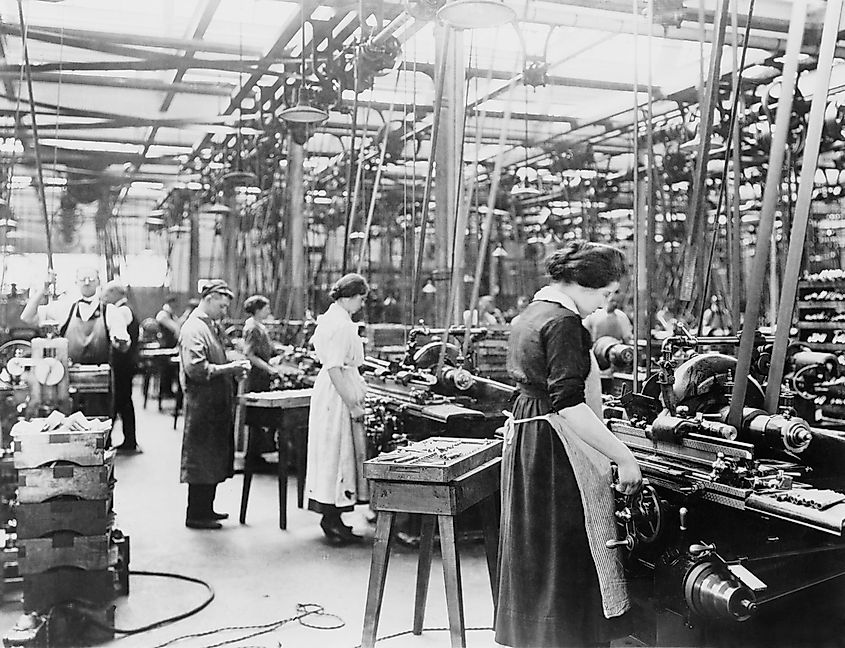
When Was The US State Of Connecticut Founded?
A powerful nation that is truly a sum of its parts, the United States is the product of the combined culture, hope, and prosperity of the 50 States that make up its DNA. Long ago, there were not only fewer states to work with, but often, the States resisted working together at all. European settlers clashed with the indigenous groups who occupied the land as early as 1622, and ultimately the Europeans claimed those regions. The East Coast was the first indigenous bastion to fall, as the first settlers landed unsuccessfully at Jamestown in Virginia in 1607 and more successfully on the coast of Massachusetts in 1620.
Furthermore, these settlers were originally an extension of the British Empire, a link that would not be severed until the American Revolution of 1775. Connecticut is one of the parcels of land that groups of settlers founded in the 17th century, and it only officially became a U.S. state in 1788. A gorgeous piece of land with a mix of coastal and rural communities, this state is wedged in between New York City and Massachusetts, sharing a border with Rhode Island to the west as well.

Pre-Colonization Era
Fascinatingly, the name Connecticut has its roots in an Algonkian word, 'quinetucket,' which refers to the sprawling tidal rivers that the heart of Connecticut is known for. After the first people of the Americas traveled over the Beringia land bridge between Siberia and Alaska around 20 thousand years ago, evidence has shown that the Connecticut region has been inhabited for 10 thousand years. Different leaders and tribes divided the land, sharing related languages amongst the Nipmuc, Mohegan, Pequot, and Niantic peoples. Unfortunately, one reason the land in Connecticut, as well as the Americas as a whole, was easily seized is because of European diseases that ravaged native populations with no form of generational immunity. Several reservations still exist throughout New England, including Connecticut, and the Mohegans live there today. Indeed, the tribes were excellently adapted to their environment: their crops were cultivated, their tools were effective, and they were more than capable of hunting big game.
17th Century

A series of colonist villages were established by 1633 around Wethersfield, Windsor, Hartford, and Springfield. Typically, these pop-up towns were led by religious leaders who organized groups of Puritans to establish spiritual sanctuaries of their own. An earlier Dutch fur trading company had existed in 1623 around Hartford, but the English colonists convinced them to resettle elsewhere. Wars with the native people were common, such as the Pequot War of 1635, and the Pequots were ultimately defeated; the stolen territories were then divided amongst the different European groups. Wethersfield, Windsor, and Hartford united under a decree called the Fundamental Orders, which some hail as the first democratic constitution in the world. Briefly, between 1687 and 1689, a British administrator arrived and negated the Fundamental Orders by way of British rule. He was ultimately sent back to England in chains by the people of Connecticut when the Glorious Revolution took place in England. The democratic charter was immediately reinstated.
18th Century

Yale made its first appearance when it opened in Connecticut in 1701, and the influx of academics aided the social development of Connecticut by severing connections between politicians and notions of theocracy. Worth mentioning is that the borders of Connecticut had been settled after a few years of disputes, but ultimately the Connecticut River was the dividing line between the New Amsterdam region and Connecticut. Furthermore, war occurred between Connecticut and the regions of Pennsylvania over the western borders, which Pennsylvania won between the years 1778 and 1783. Connecticut was slowly becoming a hub of Federalist, business-oriented, and conservative activity, and during the American Revolution, four of their delegates signed the American Declaration of Independence. Moreover, during the war against Britain for independence, Connecticut aided the Continental Army in its efforts. After the war, the Connecticut government ratified a new constitution that allowed them to become the fifth state to join the United States.
19th Century

Democratic voting was a new concept in the 19th Century, and the precedent that Connecticut set in encouraging residents to vote was remarkable. Campaigns were made and coordinated among public leaders of the Federalist parties, which organized mass efforts to get people to vote on their party lines. Religious disputes were also commonplace between factions of differing beliefs and politics. The old charter was renewed in 1818, and the new legislation specified that Connecticut would maintain distance between Church and State. During the war of 1812, Connecticut's port and trading industry were negatively affected by the chaos in Europe, due to the embargoes and restrictions that came with the era. Federalists continued to rally, and Yale College was attracting engineers, intellectuals, and inventors to the state. The effect of that is revealed by the fact that the state had more patents per capita than any other after 1790. Furthermore, the factories and manufacturers worked to aid the Union forces during the American Civil War. Connecticut also became a central area to the railroad companies because of its predisposition to manufacturing.

While the World Wars and the Great Depression of the 20th Century proved difficult for the United States, Connecticut played an integral part in providing the economic and academic backbone for the federation to persevere. The state's history led to those moments where each historic decision to promote intellectuals and democratic philosophies later paid off. Today, Connecticut continues to be a hub of engineering and pharmaceutical brilliance, which is an invaluable asset for any nation to have in its back pocket.











